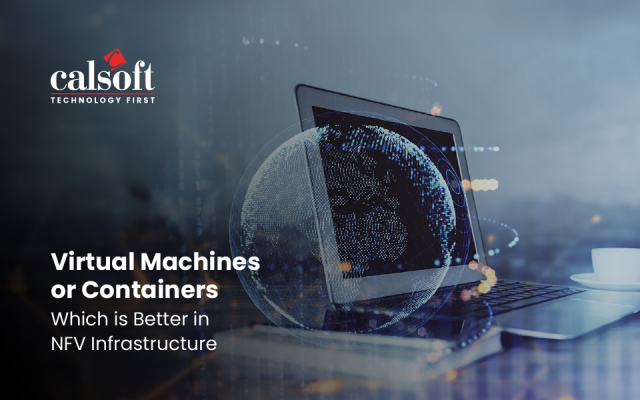Curious to find out what telecom technology has in store for 2024? Want to know how telecom giants are leveraging the goodness of modern technology to boost overall operations and multiply customer experience?
The demand for connectivity and networks has increased significantly as more and more consumers and businesses are seeking faster and high-performance connectivity. Therefore, it would not be wrong to say that we are in an era with relentless demand for connectivity. According to a report by Mordor Intelligence, the US telecom market alone is projected to grow at a CAGR of 3.67%.
The technology domain is continuously modernized with innovations and has immense potential to create intelligent solutions for the future. And the telecom industry is no exception. Evolving technology takes center stage as a critical force for digital transformation which gives breakthroughs for enterprises ensuring better productivity and profit. And as we look ahead to 2024, it brings in exciting cutting-edge technologies which can change the way we live, work, and network with each other.
The emergence of Artificial Intelligence (AI), 5G and beyond, 6G, the Internet of Things (IoT), Big Data, and more have marked incredible transformations in various industries. These new technologies digitally transform the telecom sector to meet the ever-growing demands of businesses and customers. Digital transformation with these technology trends will influence the telecom industry to realize innovation, to stay competitive in the market. The emerging trends in 2024 will support the telecom sector in facing the challenges involved in network management and security. In the coming years, with the help of these technological trends telecom industries can renovate their operational and business models to enlarge their customer base and launch innovative products, solutions, and services. Read the blog to explore the latest pioneering technology trends and their significance in the telecom market in 2024 and beyond.
Generative AI
Several advancements have happened with AI technology. The release of ChatGPT, Open AI chatbots has cut down the human task to generate high-quality content based on the trained data. Generative AI indicates deep-learning models that produce superior-quality text, representations, and other content created on the data they were trained on, as an alternative to naively classifying or distinguishing data like other AI. Generative AI has become a “slogan” this year, winning the public’s desire. Network operations are transformed using AI and Machine learning (ML) techniques, realizing operational and performance efficiency. The key network operations including network management and orchestration, configuration, and automated fault-detection become easy and accurate with Gen AI capabilities.
Gen AI in next-generation networks facilitates proactive, predictive, and preventive maintenance. AI-enabled network automation optimizes and automates the network planning, design, and operations in the telecom domain. As per Gartner, by 2027, 90% of enterprises will utilize AI/Gen AI capabilities to automate network operations.
The transformation from Cloud-Native to Edge-Native
Although edge computing is considered an extension of cloud computing, edge computing requires a fully distinct deployment and development ecosystem. Cloud-native technologies allow businesses to develop and run scalable applications in innovative, dynamic ecosystems such as public, private, and hybrid clouds.
Edge native applications are built with edge computing capabilities, which cannot be operated in a centralized data center. Enterprises prefer to bring cloud-native architectures and applications to the edge. This is done to achieve low latency, effective bandwidth consumption, and security with uninterrupted operations. 2024 could be a promising year to unleash the potential opportunities of edge computing and storage.
Telecom Cybersecurity
Cyberattacks and threats are increasing and becoming complex with technological advancements. Every year, reports say that cybercriminals are more prolific and worsening the threat landscape. Technology evolution also increases the number of users, devices, and software to provide innovative and futuristic solutions.
An integrated approach should be followed for security implementation to deliver next-generation services. To cope with cyberattacks, key security trends are evolving in the cybersecurity market such as application security, cloud, and edge security, IoT and mobile security, and Zero Trust framework.
SD-WAN Security Evolution to SASE
Although SD-WAN provides good WAN connectivity, it is not adequate to meet modern digital enterprises’ requirements. The networking and security challenges being dealt with by modern enterprises cannot be addressed with SD-WAN. This is where Secure Access Service Edge (SASE) comes into the picture.
The main benefit of SASE is the cloud-native architecture which simplifies management and the creation of a global network backbone that connects and secures all enterprises’ edges with low cost, better performance, and agility. According to Gartner, by 2026 more than 50% of companies’ data will be created and processed outside their legacy data centers, 90% of companies will utilize a multi-cloud environment and 70% will have implemented SD-WAN and SASE. As per the Markets and Markets research report, the SD-WAN market share is expected to grow from USD 13.7 billion by 2026 with a compound annual growth rate (CAGR) of 31.9%.
The telecom industry should extend its portfolio to a fully managed SD-WAN and SASE service offer to open new revenue streams.
Open RAN (O – RAN)
One of the fascinating trends in the telco industry is network disaggregation. The network is disaggregated into multiple components that can be mixed and assembled depending on the use case model. This is achieved by utilizing the principles of Software Defined Networking (SDN) and Network Function Virtualization (NFV).
With Open RAN, the distinct functions of the base station are split into a centralized Unit (CU), Distributed Unit (DU), and Radio Unit (RU) based on open standards and interfaces, which will boost multi-vendor and cost-effective implementations. The critical disruption in Open RAN is the RAN Intelligence Controller (RIC) which brings interoperability, flexibility, and programmability to the networks. Open RAN RIC is the practical enabler for AI-native RAN. The integration of AI into Open RAN and being consistent with the existing 3GPP evolution path can provide the benefits of a fully AI-native network.
Content Delivery Networks (CDN)
CDN or Content Distribution Networks constitute a group of interconnected servers that provide high accessibility and performance by spatially distributing the service to the customers. The fundamental purpose of CDN is to reduce the overall latency, ensuring better efficiency by placing intermediate servers. This reduces bandwidth consumption and ensures a good Quality of Experience (QoE) for the users.
According to the Vantage Market Research report, the global Content Delivery Network Market is predicted to grow at a Compound Annual Growth Rate (CAGR) of 11.80% throughout the forecast (2022-2028) and top in value by 2028.
Private 5G
The adoption of 5G technology is one of the key trends in the telecom industry. The introduction of 5G technologies and beyond support a broad range of use cases and applications in the market, realizing digital transformation. The upcoming substantial advancement in digital transformation is 5G Non-Public Networks (NPN) or Private 5G Networks. Enterprises have initiated embracing Private 5G to lighten security and efficiency challenges. Enterprises are competing and driving towards enhanced digitization with emerging technologies like 5G, Wi-Fi 6, and AI.
Private 5G has gained recognition among industry verticals, especially in the manufacturing, agriculture, automotive, and healthcare sectors.
Sustainability: Road-to-Net Zero
Sustainable technologies refer to innovations that embrace economic and social development. The main aim of such technologies is to significantly cut down environmental and ecological threats and to establish sustainable solutions for the future. At present, enterprises are confronting critical sustainability constraints such as decarbonization or net-zero emissions.
Enterprises can holistically coordinate green and social transformation with the help of Environmental Social and Governance (ESG) data, digital expertise, and innovative designs.
The year 2024 will mark the era where enterprises integrate environment-friendly and sustainable methods into their business strategies and framework. The best practices include the execution of energy-efficient procedures and the encouragement of corporate social responsibility programs. Sustainable digital transformation is a strategic constraint that embraces competitive advantage for any enterprise.
Internet of Things (IoT) & Industrial Networks
The IIoT market is expanding as different industry verticals integrate IoT technology for smart manufacturing, healthcare, logistics, and more.
IIoT enables more connected devices supporting new business models. Some of the leading IIoT trends of today that will impact the prospect of industries in 2024 include Digital Twins, Smart Grid, Precision Agriculture, and more. IoT applications are supported and realized by telecom networks and their capabilities. The IoT will continue to grow quickly with a massive number total, primarily because of 5G technology and its adoption.
Conclusion
The need for digital transformation for businesses significantly relies on the latest technological advancements. Especially in the telecom sector, digital transformation is highly embraced to adopt innovation and revamp business strategies to stay competitive in the dynamic marketplace. The key tech telecom trends discussed in this blog detail how telecom operations can be transformed to boost innovation in business models and operations.
As a “Technology First” company, Calsoft quickly swings to changing market dynamics. Calsoft pioneer in offering smart product engineering, quality engineering, UI/UX, DevOps, and more services to storage, networking, and telecom companies. Calsoft specializes in high-performing networking and telecom product engineering services. We offer comprehensive development, testing, and support to accelerate product releases. With our expertise in cutting-edge technologies, including AI and generative AI, we can assist you in adopting these transformative solutions to enhance networking capabilities for your customers. Partnering with industry leaders, we ensure our services are at the forefront of network transformation.






